Parts
Are all MTB Forks The Same?
When venturing into the dynamic world of mountain biking, a frequently posed question emerges: Are all MTB forks the same? This inquiry is crucial, as the fork’s design and functionality can significantly impact a rider’s experience and the bike’s performance. Let’s dive HookBike into the intricate details of MTB forks, unraveling their complexities and distinctions.
Are all MTB Forks The Same?
No, all mountain bike (MTB) forks are not the same. There are significant variations in mountain bike forks depending on several factors:
Types of MTB Forks
Mountain bike (MTB) forks can be classified in several ways, including by their intended use, construction, and features. Below are various types of MTB forks:
Based on Intended Use:
- Cross-Country (XC): Lightweight forks designed for efficiency and shorter travel, typically between 80-120mm.
- Trail: All-around forks for diverse trail conditions with travel usually between 120-160mm.
- Enduro/All Mountain: Built for more aggressive terrain with travel between 150-180mm.
- Downhill (DH): Robust forks meant primarily for descending, with travel from 180-200mm+.
- Dirt Jump: Strong forks with shorter travel, built to withstand the impact of jumps and tricks.
- Freeride: Built to handle large drops and jumps, typically with long travel.

Based on Suspension Type:
- Air-Sprung Forks: Use air chambers for suspension. These are lightweight and can be easily adjusted for rider weight and preference.
- Coil-Sprung Forks: Rely on a metal coil spring for their suspension. They tend to be a bit heavier but can offer a plush feel.
- Rigid Forks: No suspension. These are solid forks used mainly for specific XC bikes, fat bikes, or budget bikes.
Based on Wheel Size Compatibility:
- 26-inch Forks: Traditional size, becoming less common.
- 27.5-inch (or 650B) Forks: A common size for many modern mountain bikes.
- 29-inch Forks: Larger wheel size gaining popularity, especially in XC and trail bikes.
- Fat Bike Forks: Designed to accommodate wider tires typically found on fat bikes.
Based on Steerer Tube Design:
- Straight (1 1/8-inch): Older standard.
- Tapered: Wider at the base and narrows at the top; a more common standard now for increased stiffness and compatibility.
Based on Axle Type:
- Quick Release (QR): Traditional system.
- Thru-Axle: Offers more rigidity and better wheel alignment. Comes in different widths like 15x100mm, 15x110mm (Boost), and others.
Based on Brake Mount Type:
- IS (International Standard): Less common now.
- Post Mount: Direct mounting of the brake caliper to the fork, the more standard option currently.
Special Features:
- Lockout: Allows the fork to be locked out (made rigid) for efficient climbing or road riding.
- Remote Lockout: Allows lockout to be controlled from the handlebars.
- Adjustable Travel: Some forks let riders adjust the travel length for varied conditions.
- Rebound and Compression Adjustments: Let riders fine-tune how the fork responds to impacts.
Based on Material:
- Aluminum: Common material for MTB forks.
- Carbon Fiber: Found on high-end forks, known for its lightness and stiffness.
- Steel: Less common, but known for its durability and unique ride feel.
See more: types of bicycle forks

Different brands and models cater to different types of riding, terrains, and rider preferences. It’s crucial to choose a fork that fits your riding style, bike’s geometry, and budget.
Material Variations in MTB Forks
The material used in the construction of a mountain bike (MTB) fork influences its weight, strength, stiffness, ride quality, and price. Here’s a breakdown of the primary materials used in MTB forks and their characteristics:
Aluminum (or Aluminium):
Pros:
- Weight: Generally lightweight, especially when compared to steel.
- Strength & Stiffness: High strength-to-weight ratio.
- Cost: Typically more affordable than carbon fiber.
- Durability: Resistant to fatigue and can handle a lot of abuse.
Cons:
- Ride Quality: Might feel stiffer and less compliant compared to steel or carbon fiber.
- Aesthetic Wear: Can get scratched easily, though this is mostly a cosmetic concern.
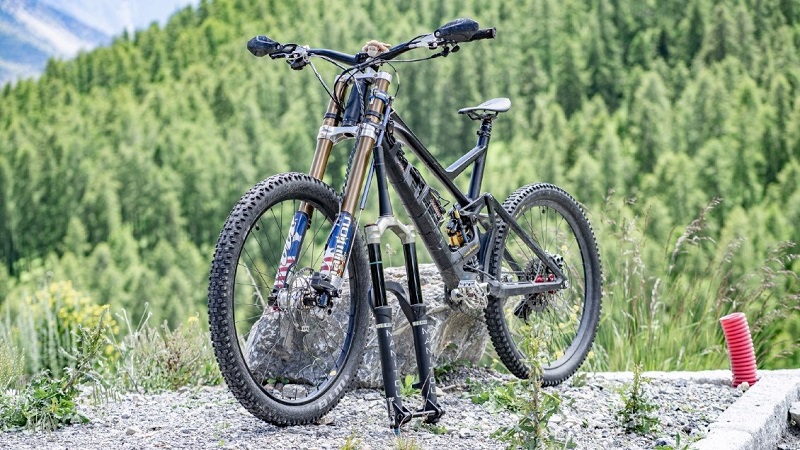
Carbon Fiber:
Pros:
- Weight: Very lightweight. High-end carbon forks are among the lightest available.
- Tunable Ride Characteristics: Manufacturers can layer carbon to optimize strength, stiffness, and compliance.
- Stiffness: Can be stiffer than aluminum, which can be beneficial for precise handling.
- Aesthetics: Often preferred for high-end bikes because of its sleek appearance.
Cons:
- Cost: Typically more expensive than other materials.
- Durability Concerns: While carbon is robust, it can be vulnerable to impact damages, such as crashes or rock strikes. Once damaged, its structural integrity might be compromised.
- Inspection: Hard to determine internal damages or micro-fractures.
Steel:
Pros:
- Ride Quality: Known for its natural springiness or compliance, offering a smoother ride.
- Durability: Highly durable and can handle a lot of abuse.
- Repairability: Steel can often be repaired if bent or damaged.
- Strength: Offers excellent strength, especially in the right alloys.
Cons:
- Weight: Typically heavier than aluminum or carbon fiber.
- Corrosion: Steel can rust if not properly cared for or if the paint gets chipped.
Titanium:
Pros:
- Ride Quality: Combines the compliance of steel with the lightness closer to aluminum.
- Weight: Lighter than steel.
- Corrosion Resistance: Doesn’t rust easily.
- Strength & Durability: Very strong and durable.
Cons:
- Cost: Among the most expensive materials for fork production.
- Rarity: Not as commonly used for forks as the other materials.
Magnesium:
Sometimes used in the lowers (the sliding part) of suspension forks because of its light weight.
Pros:
- Weight: Very lightweight.
Cons:
- Strength & Durability: Not as strong or durable as aluminum, so it’s often used in combination with other materials.
See more: How a mountain bike fork works?
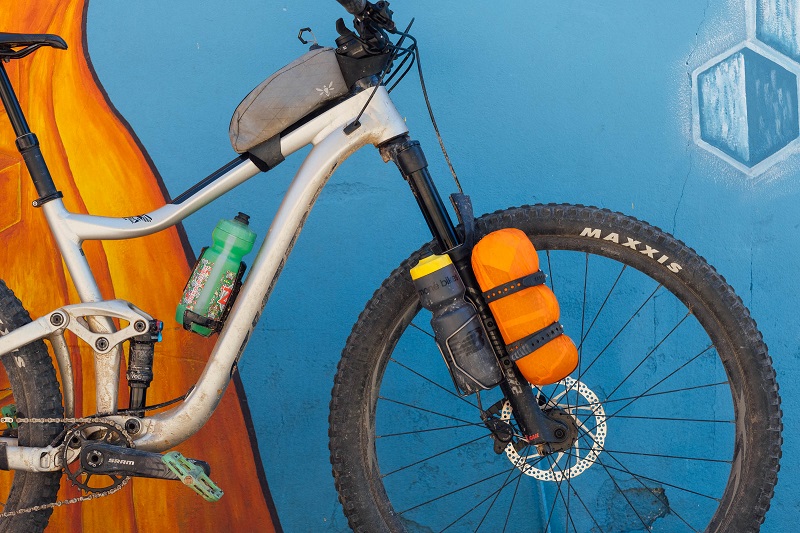
When choosing a fork, it’s crucial to weigh the pros and cons of each material in the context of your riding style, terrain, and budget. While material plays a significant role, the design, brand, and technology embedded in the fork are also critical factors influencing its performance.
Features Defining MTB Forks
MTB (Mountain Bike) forks come with a range of features that define their performance, adaptability, and usability. Here’s a comprehensive list of features that define MTB forks:
Travel Length:
This determines the fork’s shock absorption capacity. Ranging from 80mm to 200mm, the right travel length corresponds to the terrain and riding style.
Adjustability:
Higher-end MTB forks allow riders to adjust compression, rebound, and air spring pressure, tailoring the ride to individual preferences.
Brake Mount Type:
MTB forks accommodate disc brakes, but the mount type—IS (International Standard) or Post Mount—varies.
Steerer Tube:
Steerer tubes connect the fork to the bike’s frame. Varieties include tapered, straight, and 1.5-inch designs, each with its pros and cons.
When choosing a fork, it’s essential to consider the type of riding you’ll be doing, the compatibility with your bike, and your budget.
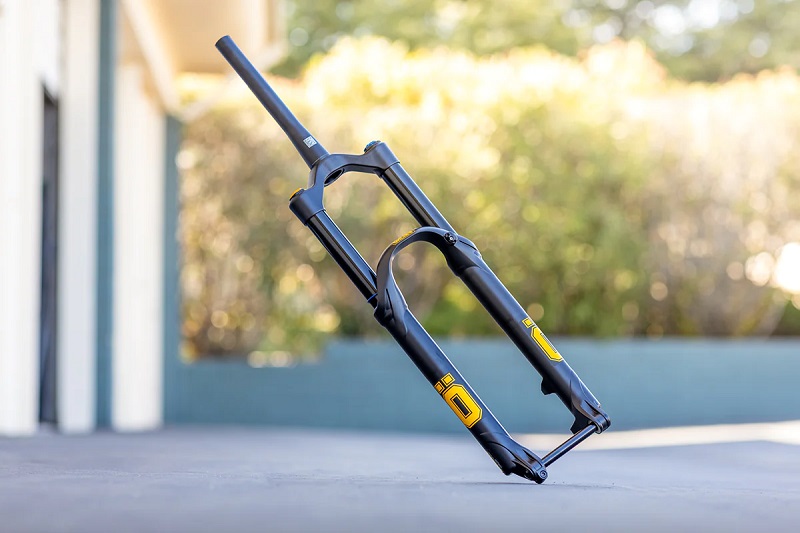
The Influence of Geometry on MTB Forks
The geometry of an MTB fork plays a crucial role in determining how the bike handles, feels, and performs. Several key geometric aspects influence the bike’s behavior:
Axle-to-Crown (A2C) Length: This is the distance from the center of the axle to the top of the fork crown (where it meets the frame). A longer A2C typically raises the front end, slackening the head angle, while a shorter A2C does the opposite. This can affect the bike’s stability and steering responsiveness.
Rake (or Offset): This is the distance between the front axle and an imaginary line that runs down through the steering axis. More offset makes the steering feel quicker and lessens the trail, while less offset slows down the steering and increases the trail. This has a direct influence on the bike’s agility and stability.
Trail: It’s the distance between the point where the front tire contacts the ground and the point where the steering axis intersects the ground. A longer trail usually means more stable but slower steering, while a shorter trail results in quicker steering.
Head Angle: While this is a frame geometry spec, the fork can influence it. A longer-travel fork can slacken the head angle, making the bike more stable at speed and better suited for descents. A shorter-travel fork steepens the head angle, making the bike more agile and climb-friendly.
Travel: The amount of suspension movement a fork offers can influence the bike’s overall geometry, especially when the suspension is active. Longer travel can result in a slacker overall bike geometry, better suited for aggressive terrain, while shorter travel usually corresponds to a more upright geometry for efficient pedaling.
Stanchion Diameter: While this isn’t a “geometry” metric in the traditional sense, thicker stanchions can increase the fork’s stiffness, which affects the bike’s handling, especially in rough conditions or during aggressive cornering.
Axle Type: While not directly a geometry aspect, the type of axle (quick release vs. thru-axle) can influence the fork’s lateral stiffness, which in turn affects handling precision.
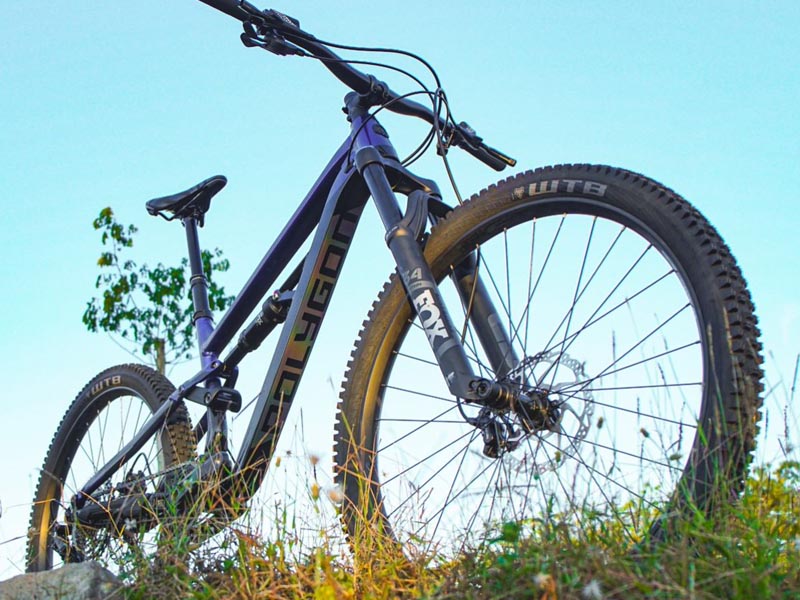
Changes to any of these aspects can shift the bike’s balance between agility and stability. For example:
- A slacker head angle (influenced by a longer fork) can make the bike feel more stable at high speeds and on descents, but potentially less nimble or agile at slower speeds or on tight trails.
- A fork with more offset can quicken the bike’s steering response, making it feel more agile, but might decrease high-speed stability.
When choosing or upgrading a fork, it’s essential to consider how it will influence the bike’s overall geometry and whether that change aligns with the desired riding style and terrain.
See more: are all bike forks the same size
Are All MTB Forks Interchangeable?
No. While many forks might appear similar, nuances in design, travel length, and intended use make certain forks better suited for specific bikes and terrains. It’s imperative to match the fork’s specifications to the bike’s frame and intended usage.
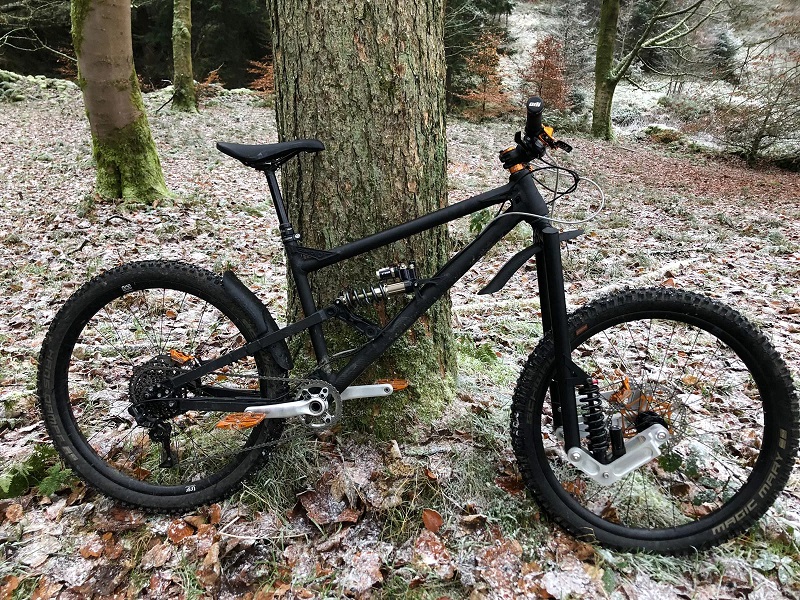
The Evolution of MTB Forks
From rigid steel forks of yesteryears to today’s advanced carbon fiber suspension systems, MTB forks have undergone a significant evolution. The constant drive for better performance, reduced weight, and enhanced durability propels continuous innovation in fork design.
Conclusion
So, are all MTB forks the same? The answer is a resounding no. The world of MTB forks is vast and varied, with each type catering to specific needs and terrains. Whether you’re a casual rider or a downhill enthusiast, understanding the differences ensures you make an informed decision, optimizing your biking experience.

